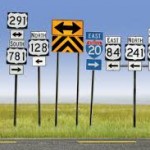 I love many components of my job as the Languages Learning Supervisor, but some of my most thought-provoking challenges emerge during my interactions with Literacy Coordinators as we develop sessions to share with the staff within Thames Valley.
I love many components of my job as the Languages Learning Supervisor, but some of my most thought-provoking challenges emerge during my interactions with Literacy Coordinators as we develop sessions to share with the staff within Thames Valley.
One of our Professional Learning Series is entitled, “Journeys into Literacy” and in an effort to provide consistency and visual appeal, we use many graphics related to travel.
Last week, during one of our sessions, we used a picture of a GPS to depict the role of an administrator as they facilitate learning conversations with their school teams.
One of the first things we do when using a GPS is to input our destination. School leaders, through their work with their school teams determine where they need their schools to go. They look at their data and choose their most urgent student need. That student need becomes the basis for their school improvement plan. They are working towards arriving at that goal.
Knowing where you’re going is the first step.
Each GPS has a feature which allows you to choose how you’re going to reach your destination. The scenic route, the most direct, the fastest etc. are all options. When leading school teams, leaders need to know which parts of the journey they will need to slow down on and which parts their school teams already have a good handle on and therefore, less time is needed. If their school team needs more time on developing a collaborative culture, then it’s time to slow down and take the scenic route. If the school team has a deep understanding about the power of positive relationships, they the lead can cruise on by.
Knowing how to get there is the second step.
Another feature on the GPS allows the user to zoom out or zoom in. As leaders, there will be times that you will need to have a bird’s eye view of the school ~ what is consistently happening (or in some cases not happening) throughout the whole school. Those are the times you are zooming out. But then there will be times that you’ll need to zoom in and focus on specific divisions, departments, grade levels.
Knowing which view (big or small) is the third step.
The final feature is the volume control. When we are driving on a well-known route, we do not need the volume turned on. It can even lead to frustration, at times. But when we are traveling in an unknown or challenging area, we need the volume to assist us in making those correct turns. As a leader, when we are facilitating the learning conversation, there are times when our voice needs to be heard, to ensure the right direction is being adhered to. But there are other times, when we need to be on “mute” and our teachers need to be leading the learning.
Knowing when to lead the learning is the fourth step.
The GPS analogy met our needs and we were glad that we had embedded it in the conversation.
When thinking about your leadership, which graphic would you chose?
Come write with me….

